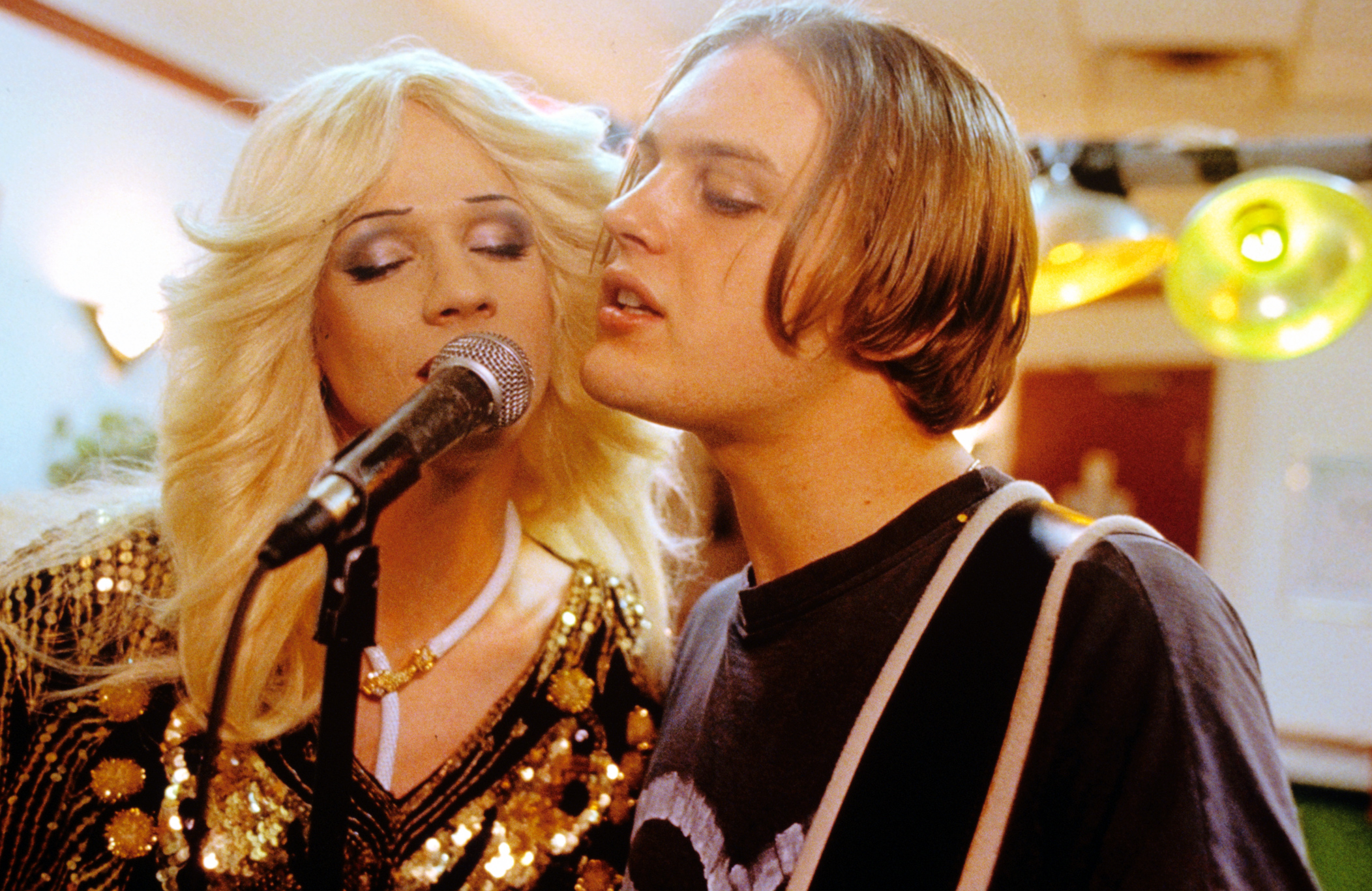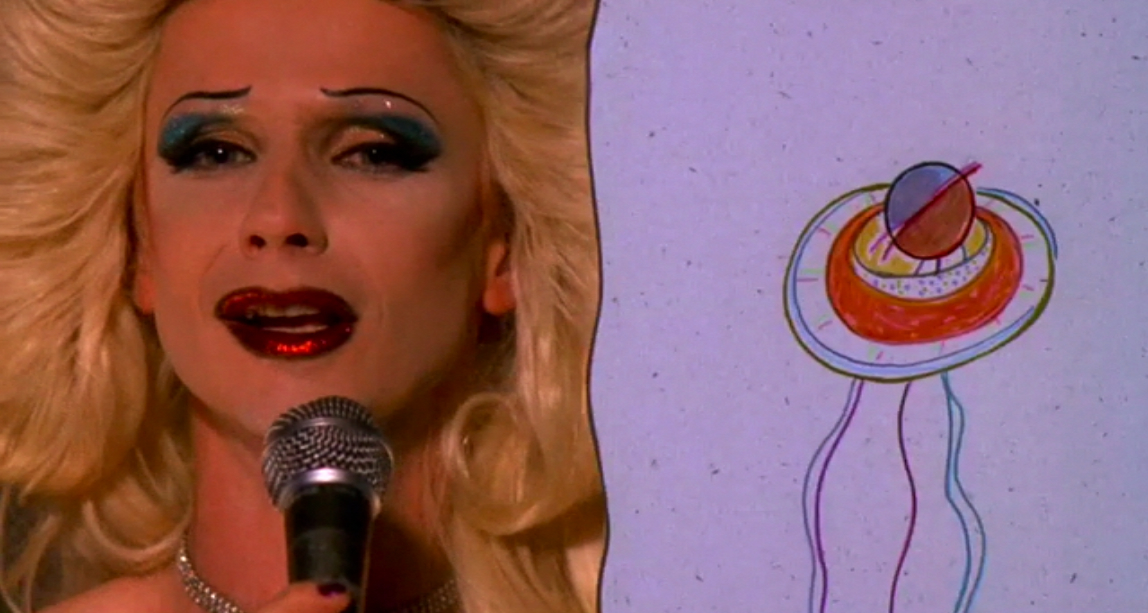John Cameron Mitchell’s Gender Bending Persona Dazzles with Insight
Author | Demitra ‘Demi’ Kampakis
How strange that in all its flamboyance, rock ‘n’ roll so rarely finds common ground with theater, drag or cinema. Fortunately, there are exceptions to any status quo because in 2001, John Cameron Mitchell provided film audiences with an impressive revival of the rock musical genre with the release of Hedwig and the Angry Inch: a “post-punk neo-glam rock musical” whose nostalgic and innovative interpretation of glam and drag bear a striking resemblance to fellow cult-classic The Rocky Horror Picture Show (1975). From its 1994 inception as a drag show at the notorious New York City club “Squeezebox”, Hedwig and the Angry Inch gradually evolved into a full-fledged Broadway production in 1997 (Neil Patrick Harris has just been signed on to play the title character beginning March 2014). A year later it became an off-Broadway hit: playing in cities worldwide to critical acclaim and a massive cult following. After spawning productions from Manila to Iceland, becoming a feature film was simply the next logical step. Co-written, directed by and starring Mitchell (who also wrote the original book and wrote/directed/starred in the theater productions), Hedwig chronicles the travails of the title character: an East German-born, transsexual trailer park denizen and wannabe rocker who—along with her band of Eastern Europe-bloc musicians named the Angry Inch—tours the pit stops of America on virtually no budget. Strutting through the movie in a dazzling assortment of wigs and extravagant ensembles, Mitchell plays Hedwig with a defiance and exuberance that echo the gender-bending audacity of late-1970s David Bowie.
It is through the highly stylized rock ballads performed throughout the film that we eventually learn of Hedwig’s full story via flashback—and how she ultimately came to find herself serenading glassy-eyed suburbanites in dive bars and tacky seafood restaurants across the American Midwest. Mitchell performs these musical sequences with a ferocity that complements the brazen energy of the film’s original soundtrack—his singing and stage presence are not only on point, but embody the impact and purity of rock. While laden with surreal pop embellishments, witty dialogue and hyper-stylized artistic elements (including animated re-enactments of songs and a lyrical sing-along), Hedwig ultimately doesn’t allow the flashiness to detract from the picture’s overarching philosophy. Rather, the film and its performances draw on an emotional core of blunt honesty; adding a deeper dimension to neo-glam rock grandeur that manages to avoid any suffocating sentiment. An allegorical semi-drag show of sorts, Hedwig and the Angry Inch is ultimately a superbly crafted tale that bears an empowering message about the fluidity of sexual roles, the transformative power of disguise, and self-invention in rock music.
John Cameron Mitchell’s film tells the story of a boy named Hansel, who grows up to become an effeminate gay male in communist East Germany during the politically tumultuous years of the Berlin Wall. He falls in love with a US sergeant named Luther, and expresses his desire to marry Luther and leave for America with him. However, Luther explains that as Hansel, that would be impossible—but if the young man undergoes a sex operation they will indeed be able to marry and secure passports easily. Thus, Hansel becomes Hedwig in a botched sex reassignment operation that leaves a little too much behind (hence the title), and it isn’t long before Hedwig finds herself abandoned in a Kansas trailer park. Turning tricks at a nearby military base for income, Hedwig also becomes a babysitter for the General and meets his son Tommy—an angsty teen brat and Jesus freak who yearns for a musician’s glory. Having formed his first start-up band consisting of instrumental-savvy Korean American housewives, Hedwig soon becomes Tommy’s mentor and lover. However, just as their relationship is to be consummated, Tommy discovers Hedwig’s true anatomy and recoils—abandoning her and taking with him all of her original music. As if being deserted and heartbroken weren’t enough, Hedwig must also watch as her former protégé builds a triumphant solo career based on songs she wrote and for which he takes credit. So what does Hedwig do? Pursue the most logical form of justice, of course: stalking Tommy and shadowing his arena tour around the country with performances at pathetic dives, as she and her manager scheme to expose Tommy’s piracy to the media.
If the storyline sounds depressing and outlandish, then perhaps it is to some extent. But such tones are anything but unintended. Rather, Mitchell employs these plot devices with confidence and purpose; his film openly embraces the humor, pathos and eccentric zeal of a rock musical. I have to admit that if asked to name my least favorite film genre, “musicals” would quickly come to mind (alongside romantic comedies). Save for a few exceptions, the song and dance numbers of such pictures tend to be drawn out and repetitive: an experience in which the audience is expected to transition to and from these choreographed-break-from-realities with passive observation and acceptance. But what if these performance scenes acquired a personality of their own—serving as a platform for commentary on transformation and wholeness? With Hedwig, it’s as though Mitchell directly addresses skeptics like myself, creating musical numbers that engage and engross through a myriad of experimental methods. Take for instance the scene that accompanies the track “Wig In a Box”: facing Hedwig, the camera follows her as she tries on different wigs and adorns her face with blush and rouge. The lyrics then appear at the bottom of the screen, and a small wig graphic bounces from word to word karaoke-style: “…I put on some makeup. Turn on the 8-track. I’m pulling the wig down from the shelf…” It’s obvious that Mitchell isn’t trying to undermine or apologize for the ostentatious nature of musicals or drag, but instead emphasizes and welcomes it as though it were another endearing member of a misfit cast. And what results is a film that’s as sexy, outrageous, vulnerable, sharp, symbolic and charming as its protagonist.
Having been betrayed by love more than once, Hedwig finds comfort through the transformative power in wigs, makeup, and costumes, and professes her empowerment in ballads like “Wig In a Box”. However, the anatomical aftermath of her surgery has left her feeling empty and inadequate; and underneath the glitzy liberation and theatrical sight gags lies a lonely desperation and search for completeness. Mitchell is brilliant in the way he uses gender and the prosthetics of drag as tools that link the emotional and physical dissonance existing within Hedwig. Her botched operation merely sets off the chain of events in the film—but it’s heartbreak that serves as the real culprit. It’s heartbreak that ultimately compels Hedwig to search for her “other half”, not yet realizing that this other half exists within her regardless of intimacy or genitalia. In fact, one of the most pinnacle moments—and my favorite musical scene—in the film is with the song “The Origin of Love”. Co-written by Mitchell and inspired by Plato’s “Symposium”, the lyrics incorporate Adam and Eve and Greek mythology to weave a witty screwball theory on the evolution of human sexuality from a generational and transsexual perspective. Not only does the song itself reflect Hedwig’s struggle for wholeness, but accompanying it is a fantastic animated short film by Emily Hubley. Hubley’s scaled down illustrations are a perfect fit for Hedwig’s gaudy trailer park punk aesthetic. Her simplistic storybook imagery adds an artistic dazzle that highlights the scene’s emotional substance without distracting from Hedwig’s character and what this all means to her. After all, it’s pretty interesting how the film presents Hedwig as someone whose sex change was not eagerly sought, but seemed to be a necessary byproduct of love; “to be free one must be willing to give up a part of oneself”. There is a split screen as the song climaxes with Hedwig singing directly into the camera, until the animation takes over the rest of the frame. The heft of Hedwig’s emotional plea to the audience makes it easy to miss just how well the artwork’s nostalgic style complements Mitchell’s moving performance.
When asked in an interview to describe the creative process that ultimately led to the making of this franchise, Mitchell focused his response on the evolution of his complex title character, claiming that while Hedwig is not autobiographical, what she goes through is clearly a big metaphor. “She doesn’t want to be what she is, but she comes to an understanding that what happened to her actually made her whole” (Indiewire). Coated in the subversive spirit and electrifying energy of rock and roll, Hedwig and the Angry Inch presents a bizarre yet poetic account of personal expression, sexual liberation and self-acceptance as told through the lens of glam culture. Through monologues, onscreen exchanges and a soundtrack that spans the musical spectrum, Mitchell’s writing boldly reflects Hedwig’s sordid tale of existence. He masters the art of double entendres; and through his thoughtful, precise and relevant commentary the audience is able to ride shotgun into Hedwig’s head. Take the scene following “Origin of Love”, while Hedwig lies in bed next to her current husband Yitzhak (who himself has a closeted love for drag). As the camera slowly pans over her body and over to Yitzhak, Hedwig’s voice delivers a monologue off screen that beautifully dissects the concept of wholeness:
“It is clear that I must find my other half. But is it a he, or a she? What does this person look like; identical to me, or somehow- complimentary? Does my other half have what I don’t? Did he get the looks, the luck, the love? Were we really separated forcibly or did he just run off with the good stuff? Or did I? …What about sex? Is that how we put ourselves back together again, or can two people actually become one?”
With a flair that is reminiscent of Coyote Ugly, The Rocky Horror Picture Show, This is Spinal Tap, Almost Famous, Rent and Transamerica, Hedwig wisely avoids any satire of the glam rock scene. Instead, there is a pulse of sincerity beating below the glittery, lollipop surface of the film—with John Cameron Mitchell presenting a sensational, irreverent and authentic account of the queer side of neo-glam rock culture. Our heroine represents society’s disenfranchised, and her brazen story is both a thrilling discovery and important cultural touchstone for the LGBTQ community.



